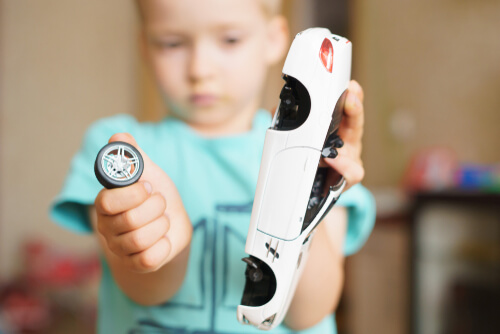Is Your Child A Sensory Seeker Or Avoider?
Jan 15, 2022 Children with sensory processing disorder typically fall into two types, a sensory seeker or a sensory avoider. Both types are unique to sensory processing disorder and come with different symptoms that separate them.
Sensory Avoider (hypersensitive)
A sensory avoiding child who struggles with processing environmental stimuli will become overwhelmed. This results in the child being overly sensitive to their environment. Sounds that normally would not bother another person make a child with sensory processing disorder cringe. A sensory avoider processes sensory input at an intense level compared to others.

A sensory avoider may also display some or all of the following symptoms:
- Distracted by background noise that’s normally not noticeable to others (a loud air conditioner, an airplane flying over)
- Avoids touching others including hugs and even cuddling with family members
- Appears to be clumsy (tripping when walking and running; bumping into things)
- Does not tolerate loud noises or bright lights
- Becomes frightened by sudden loud noises like a book dropping on the floor
- Very particular about clothing (prefers not to wear clothes or clothes that are tight or scratchy)
- Avoids crowds because of loud noise and the possibility of being touched by others
Sensory Seeker (hyposensitive)
A child who is a sensory seeker feels under stimulated by his or her environment. This under-sensitivity to sensory input leads a child to seek out more sensory stimulation. Many sensory seekers appear clumsy or loud which may lead to the belief that the child has “behavior issues.” Even though a child may need more sensory input, labeling a child as having behavior issues is often incorrect. Instead, the behavior is the result of the child seeking sensory input.

A sensory seeker may also display some or all of the following symptoms:
- A high pain tolerance (will get hurt and not feel it)
- Chews on inanimate objects often (also referred to as oral stimming)
- Stands too close to others
- Jumps, runs and crashes into objects to gain sensory input
- Will make loud noises
- Doesn’t understand his/her own strength resulting in broken objects
- Does not sit still
- Likes spinning, rocking or other repetitive movements
- Prefers to explore the world through touch
Boost Your Child’s Speech Development!
Improve language & communication skills with fun learning!

What If A Child Displays Signs And Symptoms Of Both?
Not every child with sensory processing disorder fits neatly into the categories of a sensory seeker and sensory avoider. It is possible for a child to display some or many symptoms of avoiding and seeking sensory input. Although there’s no clear explanation as to why a child displays a combination of both types, it often changes depending on their arousal level and how well he or she can self-regulate.
Self-regulation is the ability to manage emotions and behavior in difficult situations. A child who does not self-regulate well will experience ‘meltdowns’ in response to loud noises or try running away in large crowds. This is the result of sensory overload. When one or more senses are overwhelmed, a child may have a sensory meltdown.

When a child displays a combination of sensory avoiding and seeking behavior, it can be difficult to identify triggers. In order to help a child self-regulate, it’s important to know what his/her reactions are to sensory input when overwhelmed and the specific sensory triggers that cause distress.
My three-year-old falls into the categories of showing a combination of both seeking and avoiding behavior. While he’s afraid of loud noises in a public restroom, he also has a high pain tolerance and bumps into everything. Not only does he have a combination of both types, but I’ve found his triggers are always changing. This makes it even more difficult to lessen or avoid specific triggers.
Know Your Child’s Sensory Triggers
For children with sensory processing disorder, there are two types of ways a child processes sensory input, seeking or avoiding. A child who yells and crashes into things may feel under-stimulated by their environment causing them to seek out sensory stimuli. A child who covers his/her ears and screams in response to a vacuum running is avoiding sensory input.
While it would be nice to label a child as a sensory seeker or sensory avoider, often that’s not the case. Many children display a combination of symptoms for both seeking and avoiding.
To best help a child with sensory processing disorder, it’s important to know his/her sensory triggers. It’s also important for parents to know the level of reaction a child has to each trigger. Once you know how well or how bad his/her reaction is to sensory triggers, you can best know how to help lessen the distress. One of the things to consider is creating a sensory safe environment in your home.
